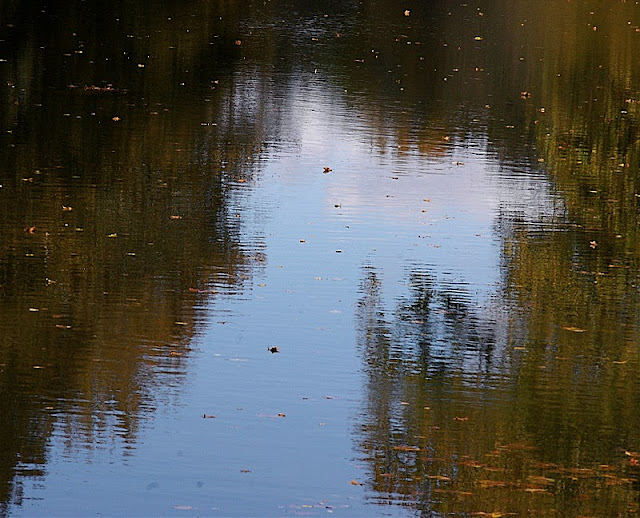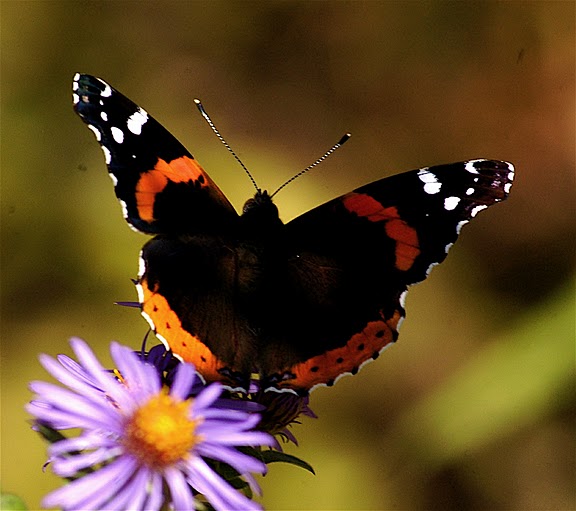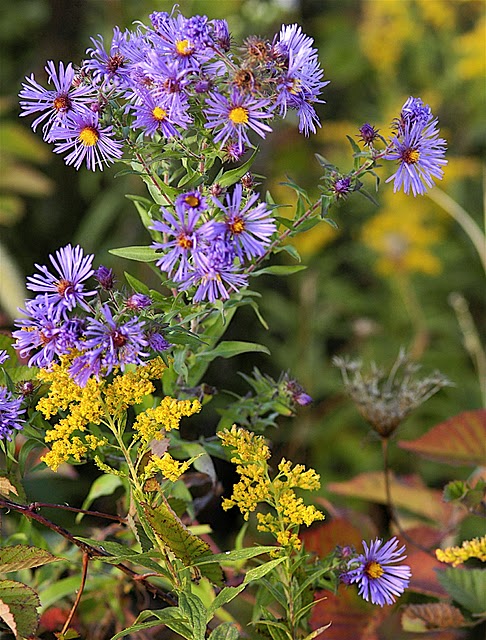—————
BEYOND THE FIRELIGHT
“Your family is early mountain Irish, correct?” the old man sitting across the small campfire asked politely.
“Yes,” I said. “Every one of my ancestors—both maternal and paternal lines—came to America well before the Revolution. They followed Boone down the Blue Ridge and southward along the Wilderness Road. The old Warrior's Trail pathway of the Shawnee.”
“I thought as much,” my companion replied, before falling momentarily silent. “I’m old Irish, too,” he finally added.
We'd made ourselves comfortable in a sort of rocky hollow located just below the brow of a steep Eastern Kentucky ridge. Not far, actually, from where a number of my great grandfathers now lay in eternal rest. The night was cold and getting colder, thanks to a chill north wind which rattled the last leaves clinging to the hilltop oaks and sent the occasional swirl of orange sparks spinning into the darkness. Stars winked between scudding clouds. A waning Hunter’s Moon cast a pale silvery light throughout the lonely woods.
My host was a retired professor of Appalachian Studies who'd once taught at a small but prestigious university in nearby West Virginia. Several of his books on regional history and folklore graced my shelves. The Professor and I have corresponded for years. When he invited me down for a weekend of hill rambling, I happily complied.
We’d spent the day visiting various sites of interest—everything from the grave of Jenny Wiley to the jumbled, cliff-fringed hollow which several researchers feel is the most likely vicinity of the storied John Swift silver mine. Towards sunset, the Professor turned his battered pickup off the rural byway, jostled a hundred yards down a rutted two-track, then switched off the engine and began digging around in the duffle behind the seat.
“You’d better bring a warm coat,” he said. “I expect it’s going to turn chilly.”
He handed me a rather weighty rucksack and swung a similar bag over his shoulder.
“Supper,” he said when I raised an eyebrow.
Our destination proved to be the cloistered little pocket near the summit of the steep hill—a demanding mile-long pull from where we’d parked the truck. By then it was full dark. No matter. In short order the Professor had a good blaze going. Packs were opened—and soon we were enjoying an excellent meal of burgoo stew, corn bread, thick slices of apple stack cake, and strong coffee.
After eating, we'd entertained one another for two solid hours trading stories—starting with bits of history from the area's early days. As the night grew darker and colder, our tales followed suite with reports of dastardly murder and incendiary feuds, sagas of battles won and lost, chronicles of star-crossed lovers, legends of lost treasures, and accounts of splendid daring-do. There was no lack of material. Eastern Kentucky is, after all, that fabled “dark and bloody ground.” Our session of yarn spinning eventually led to the Professor’s inquiry regarding my ancestors.
“Well then,” the my old friend said, “seeing as how you’re descended from such a venerable line, I’ll bet you know the word ‘Samhain’?” He, of course, pronounced the word correctly: “sow-in.”
I nodded. “The ancient Celtic term for the end of summer. November first. A feast day and festival name. The start of winter and a new year.”
He chuckled. "Yup. I figured you'd have done your research.”
“Well,” I said, “you often hear New Age pagans, neo-Druids, and others claim it’s related to some nonexistent Celtic god of the dead—which is pure drivel.”
“True,” agreed the Professor. “Though there was the belief that during this period—the transition between seasons—the barrier between this world and whatever lies beyond weakened.”
“Uh-huh,” I said. “I’ve heard those old tales of faerie mounds opening and wailing banshees.”
“And you reject them all?” my host asked.
I considered. “No. I firmly believe in things spiritual.”
“Well then,” the Professor said, “let me tell you a little story…”
After stirring the fire and tossing the last of our wood atop the renewed blaze, he began.
“Fifty-odd years ago I was sitting on this same ledge, poking at a similar fire. It was a lot colder that night—in fact there was a light drizzle which turned to sleet and even spat a bit of snow. My father had passed away the week before. He’d worked in the coal mines hereabouts until the black dust got his lungs.”
For a moment my learned friend fell silent. Far away, back in the head of the remote hollow, I heard the low hoot of a calling owl. Finally my host cleared his throat and continued.
“I came up here that night to get away—from the house and room where Dad spent his final hours, from Mom and my sisters who were still awfully broken up, from all the food and flowers everyone brought after the funeral…from everything.”
I nodded but didn’t speak. I’d done pretty much the same thing following my own father’s passing.
“Sometime late that night,” he went on, “I heard something. Out there—” He nodded at the darkness. “—beyond the firelight.”
After a judicious interval, I asked. “What?”
“Don’t know,” my companion said. “But something was there. I could hear it moving around, shuffling through the wet leaves. Sometimes I even thought I could almost catch a glimpse of whatever it was.” He shrugged. “Course it could have just been flickering shadows from the fire.”
“What do you think was there?” I finally asked.
The old teacher stared directly at me across the flames. “I think it was my father,” he said.
“Why?” I asked, almost in a whisper in case the night still held secrets.
“Because in addition to movement in the shadows and the shuffling noises, I clearly heard whatever was out there breathing…and the sounds were identical to those labored breaths my father drew just before he died. Death rattles, Mom called them.” He sighed. “And…oddly…because instead of being frightened, I finally felt at peace with all that had happened. As if Dad were nearby, reassuring me.”
I didn’t know what to say except that I believed what he was telling me. Men such as the Professor don’t make up ghost stories.
“But why did you ask me about my Irish lineage and my understanding of Samhain?” I inquired later, once we’d doused the fire and were picking our way back downhill through the darkness towards the truck.
“Because,” explained my host, “I trust you, and what you might do with my story. So I wanted you to hear from the source, exactly where it occurred. And since it happened on Samhain, I figured you being a writer, and old-line Irish—a kindred spirit, so to speak—would remain faithful to the original etymology in the retellin' and not invest the date with some evil mumbo-jumbo.”
“Ah,” I said, understanding. “I promise to tell it honorably, as a possible father and son New Year’s encounter.”
“That’s precisely what I’d hoped," said the Professor, patting me on the back. “Thank you.”
—————
(Copyright © 2004-2010 JLM/Natural Light Productions. All rights reserved.)

































